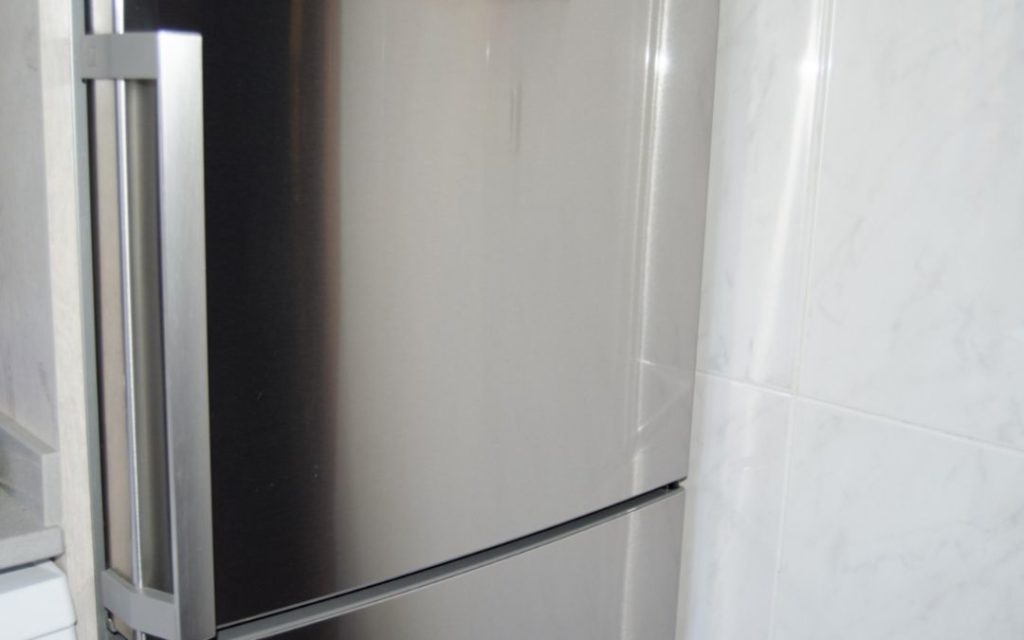Also known as compact refrigerators, mini-refrigerators are smaller in size and are often put in dorms, home offices, guests, and game rooms to help minimize the load on kitchen fridges. Furthermore, mini-fridges are assumed to consume less energy due to their small size.
However, depending on a few factors such as size, features, quality, and functionality, the power consumption of a refrigerator may vary. Keep on reading to learn the various elements contributing to the running cost and their possible solutions.
This post may contain affiliate links. Read my disclosure policy here.
A Quick Overview of Refrigerator Energy Consumption
While fridges don’t consume energy constantly, it can be difficult to tell the exact running cost. They stay turned on until an optimum temperature has been reached and then turned off. Also, fridges tend to consume much energy when you’re using them more regularly.
Similarly, the running time increases when you constantly open its doors, put warm items, or adjust the cooling settings. The degree of insulation also contributes to its running time.
It’s also worth mentioning that some mini-fridges come with the latest inverter technology, which is highly efficient. So, when choosing a mini-fridge, you should consider this factor to reduce energy consumption.
What About Energy Units?
Mini-fridges typically consume 80 to 100 watts per hour when in use. So, if you’re wondering how much energy your compact refrigerator uses per day, multiply 80 by 24hrs, and it’s 640 watts each day.
And because the residential energy consumption is measured in kilowatts per hour (kWh), you need to convert your estimation into kilowatts and divide it by 1000. After that, you’re required to determine your electricity cost to approximate the running cost of your refrigerator.
Now, take the average cost of electricity in the United States (13 cents/kWh) and multiply it with the annual energy consumption of your mini- refrigerator. The result is the running cost of a mini-fridge, which is roughly $30 per year.
But before you get too excited, you should compare the running cost of a compact refrigerator and a kitchen fridge to get your facts. This should also give you a better idea of whether or not a mini-fridge is enough to satisfy your needs.

How Much Will It Cost to Run a Mini Fridge?
Depending on the model of your mini-fridge, the running cost may vary. However, most of them, especially the energy-efficient ones, cost less than $50 per year. Again, it all comes down to how much energy your mini-fridge consumes and the factors involved.
And because these appliances don’t consume power all the time, it’s pretty impossible to predict how much energy your compact refrigerator will use. Furthermore, they turn on and off in cycles and consume much power when running or when hot items are put inside.
The level of insulation also contributes to its running cost. So, when buying a mini-fridge, choose one with triple-layer insulation and double-glazed doors to shield against the outside temperatures. Note that the more covered the interior of a fridge, the less energy consumption.
It would also help to understand the different numbers listed in the refrigerator to help you make a better choice. Most sellers list the energy consumption in watt-hours or kWh, and a kilowatt is equivalent to 1,000 watts.
So, the more kWhs you run, the higher the running costs. That said, a mini-fridge consumes an average of 1 kilowatt per hour every day, given that the conditions are right.
What Factors Contribute to Excessive Consumption?
Now that you already know the running cost of a mini-fridge, what factors influence these costs? Let’s find out:
- Quality of the mini-fridge
- The technology used
- Age of mini fridge
- Manufacturer
- Frequency of door opening
- Cooling settings
- Outside environment
These are the primary factors that influence the power consumption of a mini-refrigerator. However, there is a possibility that your mini-refrigerator might consume more or less than the estimated running cost per month. Always try to use your mini-fridge efficiently to reduce your energy consumption.
Mini Fridge Vs. Regular Fridges
If you’re staying alone or don’t need your residential fridge’s total capacity, then the marginal cost alone is enough reason to shift to a mini-fridge. Most residential fridges occupy an average space of about 19 cubic feet and consume much energy when running. However, by opting for a mini-fridge, you’ll be saving yourself from incurring those huge bills.
Remember that the more watts you run, the more kilowatt-hours you’re likely to incur at the end of every billing cycle. Furthermore, this is how the utility bill is measured, and if you’ve ever been keen on your electric bill, you’ll notice that there’s kilowatts-hour or kWh on it.
A mini-refrigerator needs about 80 to 100 watts to run efficiently. However, a full-sized residential refrigerator may run from as low as 100 watts to as high as 250 watts, depending on its size and energy efficiency. That means you stand a chance of running an extra 2.5 watts on electricity bills with a full-sized refrigerator.
The average cost of electricity for a mini-refrigerator is about $60 to $80 per year or $5 to $6.67 per month. Meanwhile, the annual electricity cost of a full-sized refrigerator goes for about $90 to $200 per year, which is equivalent to $7.50 and $16.67 per month.
Certain things are inescapable, though. For example, if you have a big family or your partner just moved in with you, a mini-fridge might not be helpful anymore. It can be challenging to try and stock everything in there.
There are many types of mini-fridges, but the most common ones are apartment refrigerators and RV refrigerators. They measure about six to ten cubic feet and can accommodate up to three people. So, if you’re looking to settle with a fridge within a specific cost spectrum, these types of fridges are a good bet.

How Do I Lower Mini Fridge Energy Usage
1. Place It Somewhere Cool
As mentioned before, poor insulation is one reason your compact refrigerator uses a lot of energy. As such, you need to put it somewhere cool, away from heat appliances.
The compressor gets hot as it tries to cool down your refrigerator, and when you place it in a hot environment, it’s going to overwork itself. As a result, it will start using its highest threshold of energy consumption and run you more time.
A good rule of thumb is to place your mini-fridge close to the floor in a well-ventilated area. If you have cold storage space, such as a bedroom, that would be the best spot for your compact refrigerator.
2. Maintain the Airflow
If you push your compact refrigerator against the wall, it’s going to deposit all that heat into the sheetrock. You can prevent this by leaving some space behind it (about six inches) so that the heat dissipates and rises throughout the room.
Fortunately, there are plenty of devices that can help maintain the airflow. Such include a USB-powered fan, which is placed behind the fridge to help lower the temperatures inside a room. Just make sure to point it away from the compressor for complete effectiveness.
3. Clean the Fridge Regularly
Once you’ve decided to bring that mini-fridge home, it’s essential that you also develop a cleaning schedule for it. This also applies to full-sized residential refrigerators. You can also put a reminder on your phone to help you stick to a specific routine.
When it’s time, assemble all the necessary tools and equipment and turn it off. Then using a vacuum cleaner and a brush, clean off the coils and the compressor, and you’re good to go. Not only will this prevent excessive energy consumption but also improve the overall health of your compact refrigerator.
4. Choose an Energy-Efficient Model
One of the crucial factors to consider when buying a mini-refrigerator is choosing an energy-efficient model. Most fridges include energy-efficiency ratings and how you should interpret them. However, some manufacturers highlight the parts you should overlook to help you make a better choice.
An excellent example of the things you should ignore is the yellow tag with an annual cost. Most manufactures include these tags in their mini-fridges to attract customers to their products. And even if they are telling the truth, those amounts could only be possible under controlled conditions.
And because this is a marketing strategy, they will make you believe that you’re saving huge chunks of money by opting for their products. So, before making a hasty decision, make sure to read through the guide to get your facts right.

Related Questions
1. Do Mini Refrigerators Use A Lot Of Electricity?
The energy consumption of mini-fridges is between 80 to 100 watts per hour when running. To estimate the annual consumption, you need to multiply 80 by 365 days, and it’s 640 kWh. And because the average electricity cost in the US is 13 cents kWh, it will cost you about $50 to run a mini-fridge in a year.
2. How Much Power Does A Mini Fridge Use Per Day?
Depending on the size and model, a mini-refrigerator may consume about 80 to 100 watts per hour when in use. It’s also worth noting that mini-fridges turn on and off in cycles. For that reason, it can be hectic to predict how much power it uses per day.
3. Can You Plug A Mini Fridge Into A Regular Outlet?
No, you cannot plug a mini-fridge into a regular outlet because they don’t need unique outlets. However, you can plug into an ordinary 110-120 volt outlet, provided that the socket is three-pronged. But that doesn’t guarantee you the flexibility to plug any device that comes into your mind, as this may create more problems.







